Social sharing and recommendations in e-commerce had a huge impact on sales.
I found interesting infographics that present the recent analysis of the USA market.
It presents the growing importance of Pinterest as a recommendation platform.
It is really interesting.
Most shares are related to apparel, home, and electronics.
No surprise for me. I do the same.
Each channel has different types of shares and conversation rates. It looks like email is the most valuable.
Twitter is good for holidays and home, Google Plus for electronics, sports, and apparel, and Facebook – for apparel, electronics, and sports:).
Some social media channels are most popular in the USA but I think the trend is really similar to Poland.
Polyvore is quite unknown in Poland, but you can use it for clothes, children’s products, and other home-related products. Pinterest is similar, but home equipment has been replaced with health products. You can notice many diets and healthy food-related pins.
Wishpot is a wishlist portal where you can share your shopping list or wish list. It seems to be a good place for recommendations and sharing.
StumbleUpon – a place to present the best websites filtered by your interest.
SocialROI stats
Social media in 2017
The rise of mobile usage, combined with shortened attention and the common usage of Facebook, has made social login essential for quick and easy experiences in eCommerce.
Events are now made easy with Social Login, Social Sign-Up, and Social Entry buttons. Form fills are now a single-touch rather than a multi-field process.
Some statistics:
32.8% of social account creators actively buy products and are likelier to share brand stories and help brands gain social organic traffic.
Facebook and Google are the most trusted—90% of all social logins. Facebook remains the preferred login for both brands and consumers. Consumers trust Facebook, and brands can obtain key data for specific targeting across buyers.
Organic traffic is bad for social media because all social media channels try to diminish it and earn money from adverts. On the other hand, they introduced more custom adverts for custom audiences based on your Facebook users. You can target your customers or subscribers and check their activity by adding pixels to your shop, website, online form, etc.
Our posts

Streamline Your Payment Processes with Zoho Checkout: A Comprehensive Review
consulting, e-commerce, entrepreneurship, financial, sales, tools Digideo
DigideoWhat factors contribute to a good user experience in an online shop
consumer behaviour, design, e-commerce, Seo, usability Digideo
DigideoUsability Testing is important
consulting, consumer behaviour, e-commerce, Sem, Seo, tools, usability Digideo
DigideoEmail marketing checklist
consulting, CRM, email marketing, marketing automation, marketing strategy, mobile marketing, report, tools Digideo
https://www.digideo.co/wp-content/uploads/2024/05/future-trends-in-crm-automation.png
1400
1400
admin
https://www.digideo.co/wp-content/uploads/2023/06/digideo2019-340-1.jpg
admin2024-05-30 14:01:132024-05-31 14:14:52Future Trends in CRM Automation – AI
Digideo
https://www.digideo.co/wp-content/uploads/2024/05/future-trends-in-crm-automation.png
1400
1400
admin
https://www.digideo.co/wp-content/uploads/2023/06/digideo2019-340-1.jpg
admin2024-05-30 14:01:132024-05-31 14:14:52Future Trends in CRM Automation – AI https://www.digideo.co/wp-content/uploads/2016/04/Google-Analytics-4-setup.png
885
1257
admin
https://www.digideo.co/wp-content/uploads/2023/06/digideo2019-340-1.jpg
admin2024-04-22 16:16:502024-07-22 09:00:36Google Analytics 4 multi-site tracking setup
https://www.digideo.co/wp-content/uploads/2016/04/Google-Analytics-4-setup.png
885
1257
admin
https://www.digideo.co/wp-content/uploads/2023/06/digideo2019-340-1.jpg
admin2024-04-22 16:16:502024-07-22 09:00:36Google Analytics 4 multi-site tracking setup https://www.digideo.co/wp-content/uploads/2024/04/2024-eCommerce-technologies-Web-Usage-Distribution-🔊-2024-04-04-14-37-02.png
664
746
admin
https://www.digideo.co/wp-content/uploads/2023/06/digideo2019-340-1.jpg
admin2024-04-04 13:23:222024-05-31 14:24:25Ecommerce Statistics in 2024
https://www.digideo.co/wp-content/uploads/2024/04/2024-eCommerce-technologies-Web-Usage-Distribution-🔊-2024-04-04-14-37-02.png
664
746
admin
https://www.digideo.co/wp-content/uploads/2023/06/digideo2019-340-1.jpg
admin2024-04-04 13:23:222024-05-31 14:24:25Ecommerce Statistics in 2024 https://www.digideo.co/wp-content/uploads/2024/01/your-ecommerce-optimization-checklist.png
1080
1080
admin
https://www.digideo.co/wp-content/uploads/2023/06/digideo2019-340-1.jpg
admin2024-01-12 12:43:332024-06-17 12:46:59Your eCommerce optimization checklist
https://www.digideo.co/wp-content/uploads/2024/01/your-ecommerce-optimization-checklist.png
1080
1080
admin
https://www.digideo.co/wp-content/uploads/2023/06/digideo2019-340-1.jpg
admin2024-01-12 12:43:332024-06-17 12:46:59Your eCommerce optimization checklist https://www.digideo.co/wp-content/uploads/2019/06/What-Is-Instagram-Shopping.png
710
434
admin
https://www.digideo.co/wp-content/uploads/2023/06/digideo2019-340-1.jpg
admin2024-01-04 09:06:422024-01-30 18:46:32Digital chain in e-commerce 2024
https://www.digideo.co/wp-content/uploads/2019/06/What-Is-Instagram-Shopping.png
710
434
admin
https://www.digideo.co/wp-content/uploads/2023/06/digideo2019-340-1.jpg
admin2024-01-04 09:06:422024-01-30 18:46:32Digital chain in e-commerce 2024 https://www.digideo.co/wp-content/uploads/2018/11/Icecat-MAGENTO-Iceshop.png
644
1208
admin
https://www.digideo.co/wp-content/uploads/2023/06/digideo2019-340-1.jpg
admin2023-11-09 08:48:112024-05-07 10:37:58Magento 2 Icecat extension live
https://www.digideo.co/wp-content/uploads/2018/11/Icecat-MAGENTO-Iceshop.png
644
1208
admin
https://www.digideo.co/wp-content/uploads/2023/06/digideo2019-340-1.jpg
admin2023-11-09 08:48:112024-05-07 10:37:58Magento 2 Icecat extension live https://www.digideo.co/wp-content/uploads/2023/11/20231010_100930-scaled-e1698940192879.jpg
750
1000
admin
https://www.digideo.co/wp-content/uploads/2023/06/digideo2019-340-1.jpg
admin2023-11-02 15:08:522024-04-22 14:46:09Meet Magento NY 2023
https://www.digideo.co/wp-content/uploads/2023/11/20231010_100930-scaled-e1698940192879.jpg
750
1000
admin
https://www.digideo.co/wp-content/uploads/2023/06/digideo2019-340-1.jpg
admin2023-11-02 15:08:522024-04-22 14:46:09Meet Magento NY 2023 https://www.digideo.co/wp-content/uploads/2014/10/Marketing-Tools-for-Small-Business.png
260
621
admin
https://www.digideo.co/wp-content/uploads/2023/06/digideo2019-340-1.jpg
admin2023-10-22 11:20:062024-04-22 18:30:42What marketing tools work in small business
https://www.digideo.co/wp-content/uploads/2014/10/Marketing-Tools-for-Small-Business.png
260
621
admin
https://www.digideo.co/wp-content/uploads/2023/06/digideo2019-340-1.jpg
admin2023-10-22 11:20:062024-04-22 18:30:42What marketing tools work in small business https://www.digideo.co/wp-content/uploads/2023/07/agilecrm.png
745
1878
admin
https://www.digideo.co/wp-content/uploads/2023/06/digideo2019-340-1.jpg
admin2023-08-28 22:33:252024-01-30 17:19:44Buying Marketing Automation tool
https://www.digideo.co/wp-content/uploads/2023/07/agilecrm.png
745
1878
admin
https://www.digideo.co/wp-content/uploads/2023/06/digideo2019-340-1.jpg
admin2023-08-28 22:33:252024-01-30 17:19:44Buying Marketing Automation tool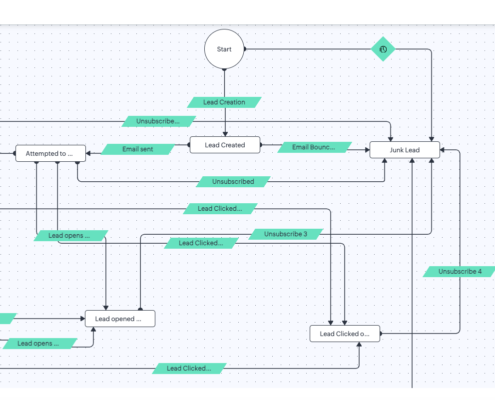 https://www.digideo.co/wp-content/uploads/2023/07/Qualify-Leads-through-email-Setup-Page-Zoho-CRM-2023-07-31-15-25-45.png
801
1589
admin
https://www.digideo.co/wp-content/uploads/2023/06/digideo2019-340-1.jpg
admin2023-07-31 14:21:472024-01-30 17:20:54Helping small businesses to automate Customer journeys
https://www.digideo.co/wp-content/uploads/2023/07/Qualify-Leads-through-email-Setup-Page-Zoho-CRM-2023-07-31-15-25-45.png
801
1589
admin
https://www.digideo.co/wp-content/uploads/2023/06/digideo2019-340-1.jpg
admin2023-07-31 14:21:472024-01-30 17:20:54Helping small businesses to automate Customer journeys https://www.digideo.co/wp-content/uploads/2013/03/website700.jpg
525
700
admin
https://www.digideo.co/wp-content/uploads/2023/06/digideo2019-340-1.jpg
admin2023-06-03 11:41:272024-01-30 17:57:52How to create a successful website
https://www.digideo.co/wp-content/uploads/2013/03/website700.jpg
525
700
admin
https://www.digideo.co/wp-content/uploads/2023/06/digideo2019-340-1.jpg
admin2023-06-03 11:41:272024-01-30 17:57:52How to create a successful website https://www.digideo.co/wp-content/uploads/2024/01/google-ads-conversion-rate-benchmarks_0.png
895
764
admin
https://www.digideo.co/wp-content/uploads/2023/06/digideo2019-340-1.jpg
admin2023-04-17 12:53:132024-04-04 13:39:03Most Important Ecommerce Metrics KPI
https://www.digideo.co/wp-content/uploads/2024/01/google-ads-conversion-rate-benchmarks_0.png
895
764
admin
https://www.digideo.co/wp-content/uploads/2023/06/digideo2019-340-1.jpg
admin2023-04-17 12:53:132024-04-04 13:39:03Most Important Ecommerce Metrics KPI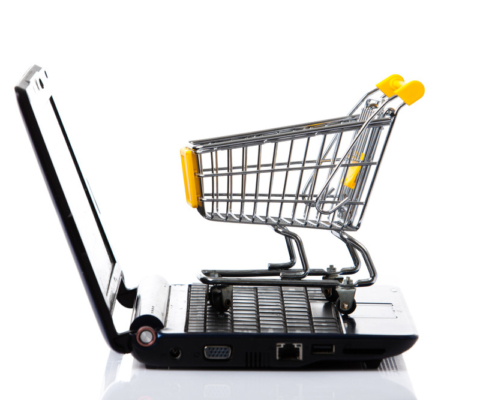 https://www.digideo.co/wp-content/uploads/2013/03/e-commerce.jpg
667
1000
admin
https://www.digideo.co/wp-content/uploads/2023/06/digideo2019-340-1.jpg
admin2023-03-25 20:57:242024-01-30 19:04:47How to deliver an e-commerce project
https://www.digideo.co/wp-content/uploads/2013/03/e-commerce.jpg
667
1000
admin
https://www.digideo.co/wp-content/uploads/2023/06/digideo2019-340-1.jpg
admin2023-03-25 20:57:242024-01-30 19:04:47How to deliver an e-commerce project Digideo
DigideoHow to run Digital Marketing campaigns for eCommerce
email marketing, marketing automation, marketing strategy https://www.digideo.co/wp-content/uploads/2022/12/websites.jpg
300
300
admin
https://www.digideo.co/wp-content/uploads/2023/06/digideo2019-340-1.jpg
admin2022-12-07 08:51:012024-01-16 15:25:34What are Magento 2 basic requirements for hosting
https://www.digideo.co/wp-content/uploads/2022/12/websites.jpg
300
300
admin
https://www.digideo.co/wp-content/uploads/2023/06/digideo2019-340-1.jpg
admin2022-12-07 08:51:012024-01-16 15:25:34What are Magento 2 basic requirements for hosting Digideo
https://www.digideo.co/wp-content/uploads/2022/12/How-To-Forecast-Sales-with-Zoho-CRM.jpg
844
1500
admin
https://www.digideo.co/wp-content/uploads/2023/06/digideo2019-340-1.jpg
admin2022-12-01 08:04:392024-01-16 15:54:56How to forecast sales with Zoho CRM
Digideo
https://www.digideo.co/wp-content/uploads/2022/12/How-To-Forecast-Sales-with-Zoho-CRM.jpg
844
1500
admin
https://www.digideo.co/wp-content/uploads/2023/06/digideo2019-340-1.jpg
admin2022-12-01 08:04:392024-01-16 15:54:56How to forecast sales with Zoho CRM Digideo
DigideoZoho Campaigns vs. The Competition: A Comprehensive Analysis of Email Marketing Platforms
analysis, consulting, CRM, marketing automation, tools https://www.digideo.co/wp-content/uploads/2022/06/jitterbit-customer-cycle.png
604
670
admin
https://www.digideo.co/wp-content/uploads/2023/06/digideo2019-340-1.jpg
admin2022-06-30 09:55:452024-05-07 10:30:16eCommerce Connectors are worth to use
https://www.digideo.co/wp-content/uploads/2022/06/jitterbit-customer-cycle.png
604
670
admin
https://www.digideo.co/wp-content/uploads/2023/06/digideo2019-340-1.jpg
admin2022-06-30 09:55:452024-05-07 10:30:16eCommerce Connectors are worth to use
Why we forget about a regular landscape and competitors’ assessment
analysis, consulting, entrepreneurship
Marketing strategy in eCommerce 2022
analysis, brand, consumer behaviour, e-commerce, entrepreneurship https://www.digideo.co/wp-content/uploads/2012/11/Qubit-Consumer-Christmas-2021-Infographic-PR-1.png-e1704299333446.jpg
597
716
admin
https://www.digideo.co/wp-content/uploads/2023/06/digideo2019-340-1.jpg
admin2021-11-30 18:37:192024-01-30 18:59:21online shop advertising – how to get started?
https://www.digideo.co/wp-content/uploads/2012/11/Qubit-Consumer-Christmas-2021-Infographic-PR-1.png-e1704299333446.jpg
597
716
admin
https://www.digideo.co/wp-content/uploads/2023/06/digideo2019-340-1.jpg
admin2021-11-30 18:37:192024-01-30 18:59:21online shop advertising – how to get started? Digideo
https://www.digideo.co/wp-content/uploads/2021/05/How-to-prepare-B2B-eCommerce-square.jpg
768
768
admin
https://www.digideo.co/wp-content/uploads/2023/06/digideo2019-340-1.jpg
admin2021-05-18 10:34:202024-01-16 16:31:31How to prepare B2B eCommerce
Digideo
https://www.digideo.co/wp-content/uploads/2021/05/How-to-prepare-B2B-eCommerce-square.jpg
768
768
admin
https://www.digideo.co/wp-content/uploads/2023/06/digideo2019-340-1.jpg
admin2021-05-18 10:34:202024-01-16 16:31:31How to prepare B2B eCommerce
Are Your eCommerce Marketing Channels efficient?
consulting, e-commerce, marketing strategy, strategy Digideo
DigideoHow do people buy online in 2021
consulting, consumer behaviour, e-commerce, entrepreneurship, social marketing https://www.digideo.co/wp-content/uploads/2020/12/Zoho-email.jpg
942
1555
admin
https://www.digideo.co/wp-content/uploads/2023/06/digideo2019-340-1.jpg
admin2020-12-07 10:09:222024-01-25 13:22:37Why my 5 customers switched to Zoho Mail
https://www.digideo.co/wp-content/uploads/2020/12/Zoho-email.jpg
942
1555
admin
https://www.digideo.co/wp-content/uploads/2023/06/digideo2019-340-1.jpg
admin2020-12-07 10:09:222024-01-25 13:22:37Why my 5 customers switched to Zoho Mail
How to switch to virtual firm and remote teams successfully?
consulting, entrepreneurship, project management, tools https://www.digideo.co/wp-content/uploads/2024/01/ecommerce-marketing-plan-1.png
353
500
admin
https://www.digideo.co/wp-content/uploads/2023/06/digideo2019-340-1.jpg
admin2020-10-03 20:21:432024-01-25 14:09:38Easy steps to implement an eCommerce marketing plan
https://www.digideo.co/wp-content/uploads/2024/01/ecommerce-marketing-plan-1.png
353
500
admin
https://www.digideo.co/wp-content/uploads/2023/06/digideo2019-340-1.jpg
admin2020-10-03 20:21:432024-01-25 14:09:38Easy steps to implement an eCommerce marketing plan https://www.digideo.co/wp-content/uploads/2023/07/prospects-funnels.jpg
391
400
admin
https://www.digideo.co/wp-content/uploads/2023/06/digideo2019-340-1.jpg
admin2020-09-10 06:43:392024-01-25 14:15:15How to prepare yourself for marketing automation?
https://www.digideo.co/wp-content/uploads/2023/07/prospects-funnels.jpg
391
400
admin
https://www.digideo.co/wp-content/uploads/2023/06/digideo2019-340-1.jpg
admin2020-09-10 06:43:392024-01-25 14:15:15How to prepare yourself for marketing automation? https://www.digideo.co/wp-content/uploads/2011/11/emarketing-campaigns-small.jpg
333
500
admin
https://www.digideo.co/wp-content/uploads/2023/06/digideo2019-340-1.jpg
admin2020-09-03 12:10:322024-01-30 17:38:40Consumer word-of-mouth in eCommerce
https://www.digideo.co/wp-content/uploads/2011/11/emarketing-campaigns-small.jpg
333
500
admin
https://www.digideo.co/wp-content/uploads/2023/06/digideo2019-340-1.jpg
admin2020-09-03 12:10:322024-01-30 17:38:40Consumer word-of-mouth in eCommerce https://www.digideo.co/wp-content/uploads/2023/07/Magento-2-dashboard-orders-chart.png
785
936
admin
https://www.digideo.co/wp-content/uploads/2023/06/digideo2019-340-1.jpg
admin2020-07-22 07:50:112024-01-25 14:19:24Magento Open Source Release Calendar 2020-2021
https://www.digideo.co/wp-content/uploads/2023/07/Magento-2-dashboard-orders-chart.png
785
936
admin
https://www.digideo.co/wp-content/uploads/2023/06/digideo2019-340-1.jpg
admin2020-07-22 07:50:112024-01-25 14:19:24Magento Open Source Release Calendar 2020-2021 Digideo
https://www.digideo.co/wp-content/uploads/2020/07/eCommerce-business-models1500.jpg
658
1500
admin
https://www.digideo.co/wp-content/uploads/2023/06/digideo2019-340-1.jpg
admin2020-07-21 17:40:572024-01-17 14:43:36eCommerce business models change organizations
Digideo
https://www.digideo.co/wp-content/uploads/2020/07/eCommerce-business-models1500.jpg
658
1500
admin
https://www.digideo.co/wp-content/uploads/2023/06/digideo2019-340-1.jpg
admin2020-07-21 17:40:572024-01-17 14:43:36eCommerce business models change organizations https://www.digideo.co/wp-content/uploads/2020/06/parcel-delivery-lockers.jpg
450
800
admin
https://www.digideo.co/wp-content/uploads/2023/06/digideo2019-340-1.jpg
admin2020-06-22 08:04:482024-01-25 14:28:45Is a last mile delivery important in eCommerce?
https://www.digideo.co/wp-content/uploads/2020/06/parcel-delivery-lockers.jpg
450
800
admin
https://www.digideo.co/wp-content/uploads/2023/06/digideo2019-340-1.jpg
admin2020-06-22 08:04:482024-01-25 14:28:45Is a last mile delivery important in eCommerce? https://www.digideo.co/wp-content/uploads/2023/07/Qalify-Leads-through-Call-Setup-Page-Zoho-CRM-2023-07-31-15-19-26.png
849
1461
admin
https://www.digideo.co/wp-content/uploads/2023/06/digideo2019-340-1.jpg
admin2020-05-21 04:42:462024-01-25 14:46:25Lead qualification B2B in Zoho CRM
https://www.digideo.co/wp-content/uploads/2023/07/Qalify-Leads-through-Call-Setup-Page-Zoho-CRM-2023-07-31-15-19-26.png
849
1461
admin
https://www.digideo.co/wp-content/uploads/2023/06/digideo2019-340-1.jpg
admin2020-05-21 04:42:462024-01-25 14:46:25Lead qualification B2B in Zoho CRM Digideo
https://www.digideo.co/wp-content/uploads/2020/05/FAQs-banner.jpg
600
1200
admin
https://www.digideo.co/wp-content/uploads/2023/06/digideo2019-340-1.jpg
admin2020-05-01 02:49:152024-01-16 14:36:41Typical ecommerce faqs
Digideo
https://www.digideo.co/wp-content/uploads/2020/05/FAQs-banner.jpg
600
1200
admin
https://www.digideo.co/wp-content/uploads/2023/06/digideo2019-340-1.jpg
admin2020-05-01 02:49:152024-01-16 14:36:41Typical ecommerce faqs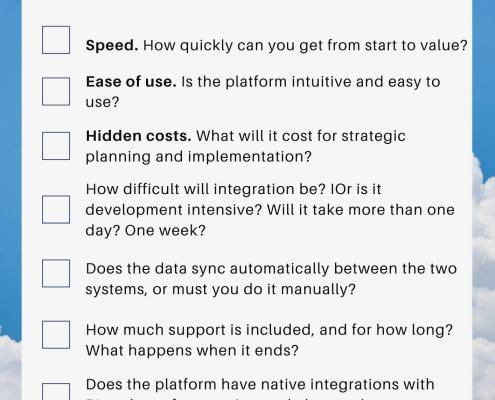 https://www.digideo.co/wp-content/uploads/2020/04/Blue-and-White-Striped-Checklist-2.jpg
2000
1414
admin
https://www.digideo.co/wp-content/uploads/2023/06/digideo2019-340-1.jpg
admin2020-04-26 13:10:142024-01-25 14:54:08Your Marketing Automation Checklist
https://www.digideo.co/wp-content/uploads/2020/04/Blue-and-White-Striped-Checklist-2.jpg
2000
1414
admin
https://www.digideo.co/wp-content/uploads/2023/06/digideo2019-340-1.jpg
admin2020-04-26 13:10:142024-01-25 14:54:08Your Marketing Automation Checklist https://www.digideo.co/wp-content/uploads/2013/04/consumer.jpg
261
481
admin
https://www.digideo.co/wp-content/uploads/2023/06/digideo2019-340-1.jpg
admin2020-04-08 16:45:092024-04-23 15:16:26Social media strategy and customer
https://www.digideo.co/wp-content/uploads/2013/04/consumer.jpg
261
481
admin
https://www.digideo.co/wp-content/uploads/2023/06/digideo2019-340-1.jpg
admin2020-04-08 16:45:092024-04-23 15:16:26Social media strategy and customer https://www.digideo.co/wp-content/uploads/2020/02/European_Ecommerce_report_2019_freeFinal-version.pdf-2024-01-25-16-06-19.png
818
1956
admin
https://www.digideo.co/wp-content/uploads/2023/06/digideo2019-340-1.jpg
admin2020-02-27 04:55:052024-01-25 15:12:42The European Ecommerce Report 2019
https://www.digideo.co/wp-content/uploads/2020/02/European_Ecommerce_report_2019_freeFinal-version.pdf-2024-01-25-16-06-19.png
818
1956
admin
https://www.digideo.co/wp-content/uploads/2023/06/digideo2019-340-1.jpg
admin2020-02-27 04:55:052024-01-25 15:12:42The European Ecommerce Report 2019 https://www.digideo.co/wp-content/uploads/2017/02/banner-cc.jpg
750
1500
admin
https://www.digideo.co/wp-content/uploads/2023/06/digideo2019-340-1.jpg
admin2020-01-22 11:59:592020-01-22 11:59:59The next new wave of eCommerce innovation
https://www.digideo.co/wp-content/uploads/2017/02/banner-cc.jpg
750
1500
admin
https://www.digideo.co/wp-content/uploads/2023/06/digideo2019-340-1.jpg
admin2020-01-22 11:59:592020-01-22 11:59:59The next new wave of eCommerce innovation https://www.digideo.co/wp-content/uploads/2023/06/digideo2019-340-1.jpg
0
0
admin
https://www.digideo.co/wp-content/uploads/2023/06/digideo2019-340-1.jpg
admin2019-09-13 12:35:262024-01-30 18:02:153D Secure payment to European customers
https://www.digideo.co/wp-content/uploads/2023/06/digideo2019-340-1.jpg
0
0
admin
https://www.digideo.co/wp-content/uploads/2023/06/digideo2019-340-1.jpg
admin2019-09-13 12:35:262024-01-30 18:02:153D Secure payment to European customers https://www.digideo.co/wp-content/uploads/2019/05/beautiful_magnolia_flowers-wide.jpg
1200
1920
admin
https://www.digideo.co/wp-content/uploads/2023/06/digideo2019-340-1.jpg
admin2019-05-13 10:15:002024-01-30 18:09:52Motivational quotes
https://www.digideo.co/wp-content/uploads/2019/05/beautiful_magnolia_flowers-wide.jpg
1200
1920
admin
https://www.digideo.co/wp-content/uploads/2023/06/digideo2019-340-1.jpg
admin2019-05-13 10:15:002024-01-30 18:09:52Motivational quotes https://www.digideo.co/wp-content/uploads/2019/02/Jungle-Scout-Amazon-Seller-Software-Product-Research-Tools-for-FBA-and-eCommerce-Businesses-2024-01-30-19-22-05.png
949
1235
admin
https://www.digideo.co/wp-content/uploads/2023/06/digideo2019-340-1.jpg
admin2019-02-26 19:00:062024-01-30 18:28:41How do I find my ecommerce niche?
https://www.digideo.co/wp-content/uploads/2019/02/Jungle-Scout-Amazon-Seller-Software-Product-Research-Tools-for-FBA-and-eCommerce-Businesses-2024-01-30-19-22-05.png
949
1235
admin
https://www.digideo.co/wp-content/uploads/2023/06/digideo2019-340-1.jpg
admin2019-02-26 19:00:062024-01-30 18:28:41How do I find my ecommerce niche?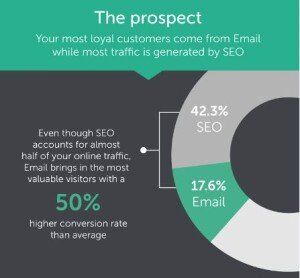
Why the personalization in the online shopping matters?
consulting, consumer behaviour, e-commerce, tools
Email Marketing in eCommerce: personalization wins the game
e-commerce, email marketing, marketing automation, marketing strategy, Sem https://www.digideo.co/wp-content/uploads/2018/12/buy-via.png
882
1461
admin
https://www.digideo.co/wp-content/uploads/2023/06/digideo2019-340-1.jpg
admin2018-12-08 15:41:362024-04-04 11:51:44when website sales dropped – boost your sales
https://www.digideo.co/wp-content/uploads/2018/12/buy-via.png
882
1461
admin
https://www.digideo.co/wp-content/uploads/2023/06/digideo2019-340-1.jpg
admin2018-12-08 15:41:362024-04-04 11:51:44when website sales dropped – boost your sales https://www.digideo.co/wp-content/uploads/2015/07/portfolio-9.jpg
570
800
admin
https://www.digideo.co/wp-content/uploads/2023/06/digideo2019-340-1.jpg
admin2018-12-02 14:57:552024-04-04 12:01:18User experience strategy
https://www.digideo.co/wp-content/uploads/2015/07/portfolio-9.jpg
570
800
admin
https://www.digideo.co/wp-content/uploads/2023/06/digideo2019-340-1.jpg
admin2018-12-02 14:57:552024-04-04 12:01:18User experience strategy
Why does your eCommerce business need an expert optimization audit
analysis, consulting, e-commerce, Sem, Seo https://www.digideo.co/wp-content/uploads/2023/07/drip-marketing.jpg
546
728
admin
https://www.digideo.co/wp-content/uploads/2023/06/digideo2019-340-1.jpg
admin2018-09-26 17:10:092024-04-04 14:22:13Drip marketing or marketing automation
https://www.digideo.co/wp-content/uploads/2023/07/drip-marketing.jpg
546
728
admin
https://www.digideo.co/wp-content/uploads/2023/06/digideo2019-340-1.jpg
admin2018-09-26 17:10:092024-04-04 14:22:13Drip marketing or marketing automation https://www.digideo.co/wp-content/uploads/2024/01/marketing-automation.png
714
1728
admin
https://www.digideo.co/wp-content/uploads/2023/06/digideo2019-340-1.jpg
admin2018-08-06 11:15:522024-04-22 16:32:02Marketing automation tactics in B2B companies
https://www.digideo.co/wp-content/uploads/2024/01/marketing-automation.png
714
1728
admin
https://www.digideo.co/wp-content/uploads/2023/06/digideo2019-340-1.jpg
admin2018-08-06 11:15:522024-04-22 16:32:02Marketing automation tactics in B2B companies https://www.digideo.co/wp-content/uploads/2018/05/gdpr-logo.jpeg
450
800
admin
https://www.digideo.co/wp-content/uploads/2023/06/digideo2019-340-1.jpg
admin2018-05-28 10:00:562024-04-22 17:09:00GDPR checklist points
https://www.digideo.co/wp-content/uploads/2018/05/gdpr-logo.jpeg
450
800
admin
https://www.digideo.co/wp-content/uploads/2023/06/digideo2019-340-1.jpg
admin2018-05-28 10:00:562024-04-22 17:09:00GDPR checklist points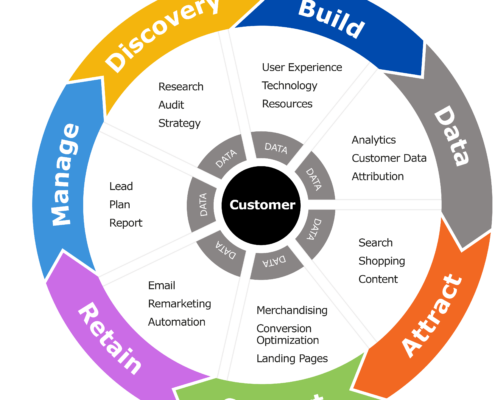 https://www.digideo.co/wp-content/uploads/2018/05/ecommerce-tactics-for-B2B-e1713806306382.png
950
1000
admin
https://www.digideo.co/wp-content/uploads/2023/06/digideo2019-340-1.jpg
admin2018-05-10 06:21:012024-04-22 17:21:23Using e-Commerce tactics to attract B2B customers
https://www.digideo.co/wp-content/uploads/2018/05/ecommerce-tactics-for-B2B-e1713806306382.png
950
1000
admin
https://www.digideo.co/wp-content/uploads/2023/06/digideo2019-340-1.jpg
admin2018-05-10 06:21:012024-04-22 17:21:23Using e-Commerce tactics to attract B2B customers
How to find the right payment services for your small business
e-commerce, entrepreneurship, sales, technology, tools https://www.digideo.co/wp-content/uploads/2018/02/ecommerce-news-funnel.io_.jpeg
720
1280
admin
https://www.digideo.co/wp-content/uploads/2023/06/digideo2019-340-1.jpg
admin2018-02-08 12:34:392024-04-22 17:27:09eCommerce News February 2018 by Digideo
https://www.digideo.co/wp-content/uploads/2018/02/ecommerce-news-funnel.io_.jpeg
720
1280
admin
https://www.digideo.co/wp-content/uploads/2023/06/digideo2019-340-1.jpg
admin2018-02-08 12:34:392024-04-22 17:27:09eCommerce News February 2018 by Digideo https://www.digideo.co/wp-content/uploads/2018/02/2017-Email-Client-Market-Share.png
469
846
admin
https://www.digideo.co/wp-content/uploads/2023/06/digideo2019-340-1.jpg
admin2018-02-06 11:00:582024-04-22 16:15:25Email marketing statistics
https://www.digideo.co/wp-content/uploads/2018/02/2017-Email-Client-Market-Share.png
469
846
admin
https://www.digideo.co/wp-content/uploads/2023/06/digideo2019-340-1.jpg
admin2018-02-06 11:00:582024-04-22 16:15:25Email marketing statistics https://www.digideo.co/wp-content/uploads/2018/01/Instagram-Sales.png
483
718
admin
https://www.digideo.co/wp-content/uploads/2023/06/digideo2019-340-1.jpg
admin2018-01-19 13:55:002024-04-22 17:43:58Instagram sales are possible
https://www.digideo.co/wp-content/uploads/2018/01/Instagram-Sales.png
483
718
admin
https://www.digideo.co/wp-content/uploads/2023/06/digideo2019-340-1.jpg
admin2018-01-19 13:55:002024-04-22 17:43:58Instagram sales are possible https://www.digideo.co/wp-content/uploads/layerslider/projects/Sokolka-okna-i-drzwi/sokolka-shop-checkout-2.png
863
1622
admin
https://www.digideo.co/wp-content/uploads/2023/06/digideo2019-340-1.jpg
admin2018-01-19 06:56:122024-04-22 17:59:18Your eCommerce Checkout Optimization Checklist
https://www.digideo.co/wp-content/uploads/layerslider/projects/Sokolka-okna-i-drzwi/sokolka-shop-checkout-2.png
863
1622
admin
https://www.digideo.co/wp-content/uploads/2023/06/digideo2019-340-1.jpg
admin2018-01-19 06:56:122024-04-22 17:59:18Your eCommerce Checkout Optimization Checklist https://www.digideo.co/wp-content/uploads/2021/05/B2B-e-commerce-trends-2020.jpg
541
830
admin
https://www.digideo.co/wp-content/uploads/2023/06/digideo2019-340-1.jpg
admin2018-01-14 18:20:342024-04-23 13:54:03E-Commerce Trends in 2018
https://www.digideo.co/wp-content/uploads/2021/05/B2B-e-commerce-trends-2020.jpg
541
830
admin
https://www.digideo.co/wp-content/uploads/2023/06/digideo2019-340-1.jpg
admin2018-01-14 18:20:342024-04-23 13:54:03E-Commerce Trends in 2018 https://www.digideo.co/wp-content/uploads/2018/01/ecommerce-sitemap-template.png
513
999
admin
https://www.digideo.co/wp-content/uploads/2023/06/digideo2019-340-1.jpg
admin2018-01-03 08:49:312024-04-22 18:14:11Why eCommerce Sitemap is important
https://www.digideo.co/wp-content/uploads/2018/01/ecommerce-sitemap-template.png
513
999
admin
https://www.digideo.co/wp-content/uploads/2023/06/digideo2019-340-1.jpg
admin2018-01-03 08:49:312024-04-22 18:14:11Why eCommerce Sitemap is important
Social sharing and recommendations in ecommerce
brand, consulting, consumer behaviour, e-commerce, Personal, social marketing https://www.digideo.co/wp-content/uploads/2012/11/shopping-cart.jpg
927
1000
admin
https://www.digideo.co/wp-content/uploads/2023/06/digideo2019-340-1.jpg
admin2017-06-24 02:43:362024-07-02 13:33:59e-commerce hotter
https://www.digideo.co/wp-content/uploads/2012/11/shopping-cart.jpg
927
1000
admin
https://www.digideo.co/wp-content/uploads/2023/06/digideo2019-340-1.jpg
admin2017-06-24 02:43:362024-07-02 13:33:59e-commerce hotter https://www.digideo.co/wp-content/uploads/2017/02/banner-news-alt.jpg
750
1500
admin
https://www.digideo.co/wp-content/uploads/2023/06/digideo2019-340-1.jpg
admin2017-03-31 18:30:092024-07-17 17:04:57eCommerce News March 2017 by Digideo
https://www.digideo.co/wp-content/uploads/2017/02/banner-news-alt.jpg
750
1500
admin
https://www.digideo.co/wp-content/uploads/2023/06/digideo2019-340-1.jpg
admin2017-03-31 18:30:092024-07-17 17:04:57eCommerce News March 2017 by Digideo Digideo
https://www.digideo.co/wp-content/uploads/2017/02/masterindex-2017-research-product-bought.png
301
879
admin
https://www.digideo.co/wp-content/uploads/2023/06/digideo2019-340-1.jpg
admin2017-02-04 20:59:212024-07-17 17:06:08eCommerce news February 2017
Digideo
https://www.digideo.co/wp-content/uploads/2017/02/masterindex-2017-research-product-bought.png
301
879
admin
https://www.digideo.co/wp-content/uploads/2023/06/digideo2019-340-1.jpg
admin2017-02-04 20:59:212024-07-17 17:06:08eCommerce news February 2017
Finally mobile usage exceeded desktop usage globally
analysis, consulting, consumer behaviour, report, Sem, usability
what eCommerce Marketplace Metrics are important
analysis, brand, consulting, e-commerce, entrepreneurship, marketing strategy, Seo, technology
Building scaled ecommerce business
consulting, consumer behaviour, CRM, e-commerce, entrepreneurship, marketing automation, marketing strategy, strategy, technology, tools https://www.digideo.co/wp-content/uploads/2016/04/entrepreneurship-1.jpg
700
967
admin
https://www.digideo.co/wp-content/uploads/2023/06/digideo2019-340-1.jpg
admin2016-04-19 12:00:122024-07-02 13:20:42Why entrepreneurship behaviour is important for your company
https://www.digideo.co/wp-content/uploads/2016/04/entrepreneurship-1.jpg
700
967
admin
https://www.digideo.co/wp-content/uploads/2023/06/digideo2019-340-1.jpg
admin2016-04-19 12:00:122024-07-02 13:20:42Why entrepreneurship behaviour is important for your company https://www.digideo.co/wp-content/uploads/2016/03/shop.jpg
667
1000
admin
https://www.digideo.co/wp-content/uploads/2023/06/digideo2019-340-1.jpg
admin2016-03-01 15:16:402024-05-31 15:59:36Truth behind eCommerce optimization
https://www.digideo.co/wp-content/uploads/2016/03/shop.jpg
667
1000
admin
https://www.digideo.co/wp-content/uploads/2023/06/digideo2019-340-1.jpg
admin2016-03-01 15:16:402024-05-31 15:59:36Truth behind eCommerce optimization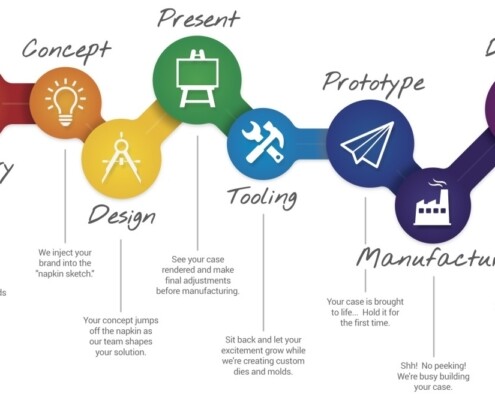 https://www.digideo.co/wp-content/uploads/2016/01/Optimized-Design-Process.jpg
667
1200
admin
https://www.digideo.co/wp-content/uploads/2023/06/digideo2019-340-1.jpg
admin2016-01-27 12:36:372024-04-23 16:35:09Future doesn’t exist – the design process
https://www.digideo.co/wp-content/uploads/2016/01/Optimized-Design-Process.jpg
667
1200
admin
https://www.digideo.co/wp-content/uploads/2023/06/digideo2019-340-1.jpg
admin2016-01-27 12:36:372024-04-23 16:35:09Future doesn’t exist – the design process https://www.digideo.co/wp-content/uploads/2016/01/web-design-trends-in-2016.jpg
430
741
admin
https://www.digideo.co/wp-content/uploads/2023/06/digideo2019-340-1.jpg
admin2016-01-19 17:05:512024-04-23 16:46:42Web design trends in 2016
https://www.digideo.co/wp-content/uploads/2016/01/web-design-trends-in-2016.jpg
430
741
admin
https://www.digideo.co/wp-content/uploads/2023/06/digideo2019-340-1.jpg
admin2016-01-19 17:05:512024-04-23 16:46:42Web design trends in 2016 https://www.digideo.co/wp-content/uploads/2016/01/magento-market-share-102015.png
640
640
admin
https://www.digideo.co/wp-content/uploads/2023/06/digideo2019-340-1.jpg
admin2016-01-04 12:08:382024-07-17 12:28:07What is Magento market share in 2015
https://www.digideo.co/wp-content/uploads/2016/01/magento-market-share-102015.png
640
640
admin
https://www.digideo.co/wp-content/uploads/2023/06/digideo2019-340-1.jpg
admin2016-01-04 12:08:382024-07-17 12:28:07What is Magento market share in 2015 https://www.digideo.co/wp-content/uploads/2015/08/remote-team-scaled.jpg
1344
2560
admin
https://www.digideo.co/wp-content/uploads/2023/06/digideo2019-340-1.jpg
admin2015-08-27 19:39:502024-07-02 13:50:47Using Virtual Agent for eCommerce customers
https://www.digideo.co/wp-content/uploads/2015/08/remote-team-scaled.jpg
1344
2560
admin
https://www.digideo.co/wp-content/uploads/2023/06/digideo2019-340-1.jpg
admin2015-08-27 19:39:502024-07-02 13:50:47Using Virtual Agent for eCommerce customers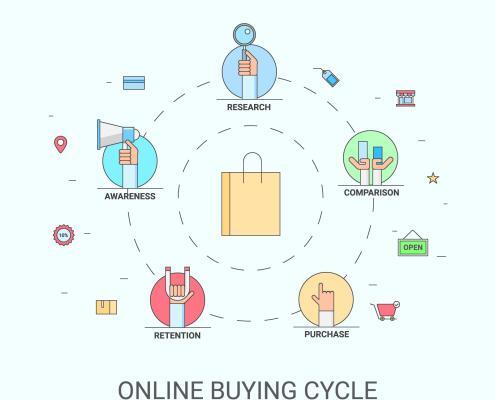 https://www.digideo.co/wp-content/uploads/2015/05/ecommerce-journey.jpg
1600
1600
admin
https://www.digideo.co/wp-content/uploads/2023/06/digideo2019-340-1.jpg
admin2015-05-08 19:42:142024-04-23 16:11:29Conversion rate optimization for your shop or website
https://www.digideo.co/wp-content/uploads/2015/05/ecommerce-journey.jpg
1600
1600
admin
https://www.digideo.co/wp-content/uploads/2023/06/digideo2019-340-1.jpg
admin2015-05-08 19:42:142024-04-23 16:11:29Conversion rate optimization for your shop or website
Leveraging Replicating Global Content
consulting, entrepreneurship, marketing strategy, strategy, technology, tools https://www.digideo.co/wp-content/uploads/2015/01/internetofthings2.jpg
567
756
admin
https://www.digideo.co/wp-content/uploads/2023/06/digideo2019-340-1.jpg
admin2015-01-14 22:14:582024-04-22 12:44:55Trend 2015 – Internet of things
https://www.digideo.co/wp-content/uploads/2015/01/internetofthings2.jpg
567
756
admin
https://www.digideo.co/wp-content/uploads/2023/06/digideo2019-340-1.jpg
admin2015-01-14 22:14:582024-04-22 12:44:55Trend 2015 – Internet of things
US shoppers behavior changes 2014
consulting, consumer behaviour, e-commerce, marketing strategy, report, sales https://www.digideo.co/wp-content/uploads/2014/05/consumer_reviews.jpg
604
1079
admin
https://www.digideo.co/wp-content/uploads/2023/06/digideo2019-340-1.jpg
admin2014-05-29 19:56:082014-05-29 19:56:08Consumer reviews authenticity
https://www.digideo.co/wp-content/uploads/2014/05/consumer_reviews.jpg
604
1079
admin
https://www.digideo.co/wp-content/uploads/2023/06/digideo2019-340-1.jpg
admin2014-05-29 19:56:082014-05-29 19:56:08Consumer reviews authenticity
how to make an attractive content for B2B shops
brand, consulting, consumer behaviour, e-commerce, entrepreneurship, marketing strategy, Sem, Seo https://www.digideo.co/wp-content/uploads/2014/01/shop.jpg
667
1000
admin
https://www.digideo.co/wp-content/uploads/2023/06/digideo2019-340-1.jpg
admin2014-01-02 12:59:482024-04-23 15:36:26The Pricing Strategy In e-Commerce Is Fundamental
https://www.digideo.co/wp-content/uploads/2014/01/shop.jpg
667
1000
admin
https://www.digideo.co/wp-content/uploads/2023/06/digideo2019-340-1.jpg
admin2014-01-02 12:59:482024-04-23 15:36:26The Pricing Strategy In e-Commerce Is Fundamental
Negative feedback is positive
consulting, consumer behaviour, e-commerce, sales, social marketing, tools
Content is a king
consulting, consumer behaviour, e-commerce, marketing strategy, Seo, social marketing
Market intelligence and strategy
brand, consulting, consumer behaviour, entrepreneurship, marketing strategy



Share this entry